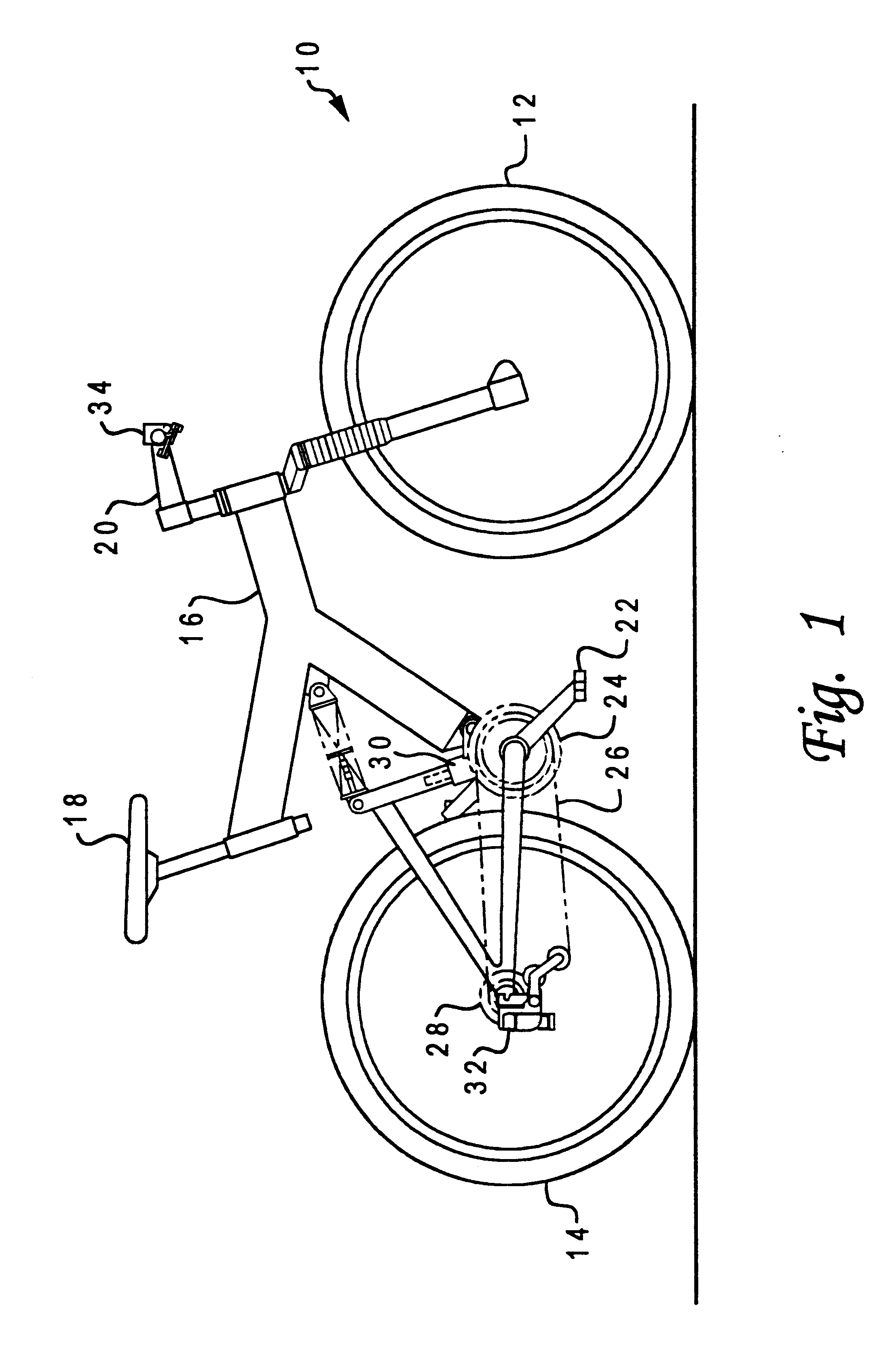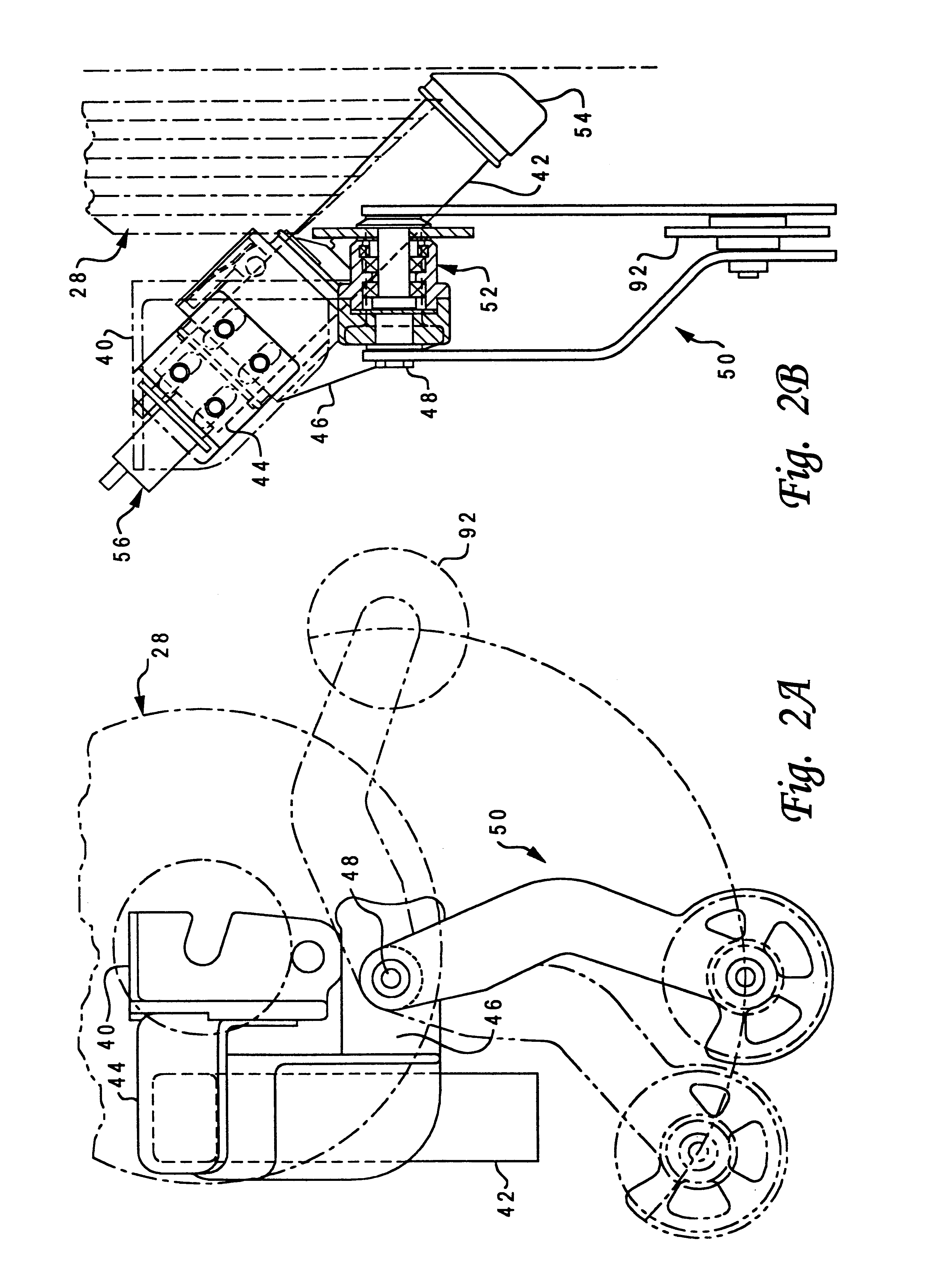Hydraulically-operated bicycle shifting system with power shifting
a technology of hydraulic operation and shifting system, applied in the field of bicycles, can solve the problems of affecting the precision of the derailleur, difficult shifting of the derailleur, and the work of various contaminants in the derailleur
- Summary
- Abstract
- Description
- Claims
- Application Information
AI Technical Summary
Benefits of technology
Problems solved by technology
Method used
Image
Examples
Embodiment Construction
With reference now to the figures, and in particular with reference to FIG. 1, there is depicted one embodiment 10 of a bicycle constructed in accordance with the present invention, having a hydraulically-actuated derailleur shifting system. Bicycle 10 has several conventional elements, including front and rear wheels 12 and 14, frame 16, seat 18, handle bars 20, and pedals 22. Pedals 22 are fastened to a pedal crankshaft which in turn is affixed to a cluster 24 of larger diameter sprockets. A drive chain 26 extends between sprocket cluster 24 and a sprocket cassette 28 mounted on the axle of rear wheel 14. Rear wheel sprocket cassette 28 may have a set of, e.g., from five to nine sprockets of slightly different diameters that are mounted to the rear wheel around a ratcheted hub. These sprockets are arranged by size with the smallest being furthest away from the hub and the largest closest to the hub. Two or three larger diameter sprockets may be provided for front wheel sprocket cl...
PUM
 Login to View More
Login to View More Abstract
Description
Claims
Application Information
 Login to View More
Login to View More - R&D
- Intellectual Property
- Life Sciences
- Materials
- Tech Scout
- Unparalleled Data Quality
- Higher Quality Content
- 60% Fewer Hallucinations
Browse by: Latest US Patents, China's latest patents, Technical Efficacy Thesaurus, Application Domain, Technology Topic, Popular Technical Reports.
© 2025 PatSnap. All rights reserved.Legal|Privacy policy|Modern Slavery Act Transparency Statement|Sitemap|About US| Contact US: help@patsnap.com



